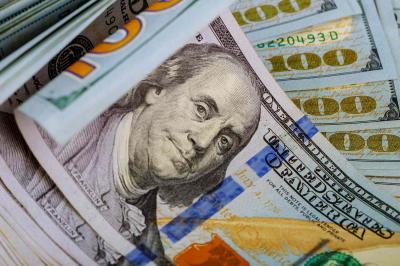Understanding the Concept of Money: Definition, History, and Types
To put it simply, money may be anything that represents value in the eyes of the buyer and seller. Consequently, it is widely used for paying for goods and services and repaying debts. You can't put a price on happiness. Currency is essential for the smooth functioning of economic transactions and the expansion of financial markets. Money, its origins, and its value are often defined by economists. Money has many different qualities, and here are some of them.
Here's an overview of the concept of money:
- The Barter System: The Early Form of Trade
- The Introduction of Currency: From Commodity Money to Coinage
- The Rise of Paper Money and Banking
- The Gold Standard: A Fixed Exchange Rate System
- The Birth of Fiat Money: Legal Tender by Government Decree
- The Evolution of Electronic Money: From Credit Cards to Cryptocurrencies
- The Impact of Globalization on Money and Finance
- Challenges and Innovations in Modern Money Systems
- The Future of Money: Trends and Speculations
- Conclusion: Reflecting on the Past and Looking to the Future
The Barter System: The Early Form of Trade
In the early days, before the concept of money as we know it today existed, people relied on the barter system to trade goods and services. I find it fascinating how this system, based on the exchange of goods for goods, was the cornerstone of early economies. In a barter transaction, I would trade items I have for something someone else has, based on mutual agreement. This method required a double coincidence of wants: I had to possess something the other party desired, and they had to have something I wanted.
One challenge of the barter system was the lack of a standard measure of value. This often led to difficulties in determining fair exchange rates. I can't help but appreciate the creativity people showed by using various items like shells, livestock, or even grains as mediums of exchange to overcome this challenge. This alternative helped establish relative values for different goods, paving the way for more structured forms of trade.
While the barter system laid the groundwork for trade and economic transactions, I can understand why societies eventually transitioned to using standardised forms of money. The evolution of money brought about greater efficiency, eliminated the limitations of the barter system, and provided a more convenient medium of exchange.
Reflecting on the barter system reminds me of the ingenuity and adaptability of early civilizations in finding ways to facilitate trade. It highlights how the concept of money, with its role as a unit of account, store of value, and medium of exchange, revolutionised economies and shaped the world as we know it today.
The Introduction of Currency: From Commodity Money to Coinage
I will delve into the fascinating history of money, starting with the evolution from barter to the introduction of currency. This transition marked a significant milestone in the development of economies worldwide.
- Commodity Money
I'll begin by discussing commodity money, which consists of valuable goods used for trade. Items like salt, cattle, and grain served as early forms of currency due to their widespread acceptance and intrinsic value. This system facilitated exchanges but had limitations such as perishability and lack of divisibility.
- Metallic Money
The advancement of metallic money, particularly using metals like gold and silver, revolutionised the concept of currency. These metals were durable, easily divisible, and universally desired, making them ideal for trade. The standardisation of metal weights and qualities enhanced trust in the monetary system.
- Coinage
The introduction of coinage further streamlined commercial transactions. By stamping metals with official marks, rulers could guarantee the weight and purity of currency, reducing the risk of counterfeiting and promoting economic growth. Coins became widely accepted due to their portability and recognizability.
- Impact on Economies
The shift from commodity money to coinage revolutionised economies by facilitating trade, promoting specialisation, and stimulating economic growth. The standardisation of currency values enabled the expansion of markets beyond local boundaries, creating a more interconnected global economy.
Understanding the transition from commodity money to coinage is crucial to grasping the evolution of modern financial systems and the role of currency in shaping societies and economies.
The Rise of Paper Money and Banking
I find the evolution of money and banking mechanisms fascinating. Let's delve into the extraordinary journey that brought us paper money and banking. Here are some key points to consider:
- Emergence of Paper Money:
- Paper money first appeared in China during the Tang Dynasty around the 7th century. It was initially used as a promissory note for merchants to avoid the heavy weight of carrying metal coins.
- The use of paper money gradually spread to other parts of the world, transforming the way people conducted transactions.
- Development of Banking Systems:
- Banking institutions emerged to facilitate the storage of wealth and provide loans to individuals and businesses.
- The concept of fractional reserve banking allowed banks to lend out more money than they actually held in reserves, increasing economic activity but also introducing new risks.
- Introduction to Central Banks:
- Central banks were established to regulate the money supply, stabilize the economy, and oversee the banking system.
- They play a crucial role in setting monetary policy and managing currency issuance.
- Impact of Technology:
- The rise of digital banking and online payment systems has revolutionized the way we interact with money.
- Technologies like blockchain have the potential to further transform the financial landscape, offering more secure and efficient ways to conduct transactions.
As we reflect on the rise of paper money and banking, it's clear that these developments have played a significant role in shaping our modern economy and financial systems.
The Gold Standard: A Fixed Exchange Rate System
I find the Gold Standard to be a fascinating topic when it comes to understanding fixed exchange rate systems in monetary history. During the time of the Gold Standard, currencies were directly linked to gold, establishing a fixed value for each currency unit in terms of a specified amount of gold. This system provided stability and predictability for international trade and finance.
- The Gold Standard was widely adopted in the 19th and early 20th centuries, with countries using gold as the standard to determine the value of their currencies.
- Under this system, any individual could exchange their currency for a fixed amount of gold, which helped to limit inflation and control the money supply.
- Central banks held gold reserves to ensure they could redeem their currency in gold when required, which helped maintain confidence in the currency.
- One of the main advantages of the Gold Standard was its role in promoting price stability and preventing excessive government spending.
- However, the Gold Standard also had limitations, such as restricting the ability of governments to respond to economic crises through monetary policy adjustments.
Understanding the historical context and implications of the Gold Standard provides valuable insights into the evolution of monetary systems and the challenges associated with fixed exchange rate regimes. The Gold Standard era represents a significant chapter in the history of money and highlights the complexities of balancing stability with flexibility in the global economy.
The Birth of Fiat Money: Legal Tender by Government Decree
I will now delve into the transition from commodity money to fiat money and how governments played a pivotal role in establishing and maintaining the value of fiat currencies.
- End of the Gold Standard: With the abandonment of the gold standard in the 20th century, governments started to issue fiat money, which is not backed by a physical commodity like gold or silver. Instead, the value of fiat money is derived from the trust and confidence people have in the issuing government.
- Legal Tender Laws: Governments establish fiat money as legal tender through legislative decrees. This means that, by law, individuals and businesses must accept fiat money as a means of payment for goods and services. This legal status gives fiat money universal acceptance within the economy.
- Monetary Policy: Central banks, acting on behalf of the government, control the money supply and regulate the value of fiat currency through monetary policy. By adjusting interest rates, buying or selling government securities, and setting reserve requirements for banks, central banks influence the value of fiat money to maintain stable prices and economic growth.
- Value and Stability: The value of fiat money can fluctuate based on factors such as inflation, economic performance, and government policies. Governments aim to ensure the stability of fiat currencies to maintain confidence in the economy and facilitate trade and transactions.
- Criticism and Challenges: Critics of fiat money argue that its value is vulnerable to government manipulation, leading to inflation and economic instability. Additionally, the rise of digital currencies like Bitcoin poses a new challenge to traditional fiat currencies and central banking systems.
Fiat money has become the cornerstone of modern economies, facilitating transactions, investments, and economic growth. Understanding the dynamics of fiat money is crucial for grasping the complexities of today's financial systems.
The Evolution of Electronic Money: From Credit Cards to Cryptocurrencies
I have witnessed a significant transformation in the way we perceive and use money. One remarkable evolution is the transition from physical currency to electronic forms of payment. This shift revolutionized the financial landscape, offering convenience, speed, and security like never before. Let's delve into the fascinating journey of electronic money, from traditional credit cards to the disruptive world of cryptocurrencies.
- Credit Cards:
- Credit cards marked the initial steps towards electronic transactions, allowing users to make purchases without physical cash. These plastic cards provided a convenient way to access credit lines issued by financial institutions.
- Debit Cards:
- Debit cards followed suit, enabling users to access funds directly from their bank accounts for transactions. This advancement eliminated the need to carry cash and made payments more efficient.
- Mobile Payments:
- The advent of smartphones brought forth mobile payment solutions like Apple Pay and Google Wallet. These services leveraged NFC technology, enabling users to make secure transactions using their mobile devices.
- Digital Wallets:
- Digital wallets like PayPal and Venmo further streamline online transactions. Users could store payment information securely and make purchases or peer-to-peer transfers with ease.
- Cryptocurrencies:
- The emergence of cryptocurrencies, led by Bitcoin, introduced decentralized digital currencies that operate independently of traditional banking systems. Blockchain technology ensures the security and immutability of transactions, offering a new paradigm for financial transactions.
Electronic money continues to evolve, with innovations like stablecoins and central bank digital currencies (CBDCs) shaping the future of finance. As technology advances, the possibilities for electronic money are limitless, promising a more connected and efficient global economy.
The Impact of Globalization on Money and Finance
I believe that globalization has significantly impacted money and finance on a global scale. Here are some key points to consider:
- Increased Connectivity: Globalization has connected economies around the world, leading to an interconnected financial system where events in one country can have far-reaching effects on others.
- Exchange Rates: With the increase in international trade and investment, exchange rates have become more volatile, affecting the value of currencies and influencing financial markets.
- Financial Flows: Globalization has led to the free flow of capital across borders, allowing for greater investment opportunities but also increasing the risk of financial crises spreading rapidly.
- Regulatory Challenges: As financial transactions cross borders more freely, regulating these activities becomes more complex, requiring international cooperation and coordination.
- Emergence of Digital Currency: The globalization-driven digital revolution has given rise to cryptocurrencies like Bitcoin, challenging preconceived notions of money and finance.
- Income Inequality: Globalization has contributed to widening income disparities between countries and within societies, impacting how money is distributed and accessed.
In conclusion, globalization has reshaped the landscape of money and finance, presenting both opportunities and challenges for individuals, businesses, and governments worldwide.
Challenges and Innovations in Modern Money Systems
I. Digital Currency: The rise of digital currency, such as cryptocurrencies like Bitcoin, presents a challenge to traditional financial systems. These decentralized forms of currency are reshaping how we perceive and use money.
II. Cybersecurity Concerns: With the increased use of online and digital transactions, cybersecurity threats have become a significant challenge in modern money systems. Innovations in encryption and security protocols are essential to safeguarding financial transactions.
III. Financial Inclusion: A key innovation in modern money systems is the focus on financial inclusion. Efforts are being made to provide banking services to underserved populations, helping to bridge the gap between the traditional banking system and marginalized communities.
IV. Regulatory Challenges: Governments and regulatory bodies face challenges in adapting to the fast-paced changes in modern money systems. Balancing innovation with regulatory oversight is crucial to ensuring stability and security within the financial system.
V. Cross-Border Transactions: As global trade and commerce continue to expand, challenges arise in facilitating seamless cross-border transactions. Innovations in payment systems and blockchain technology are driving solutions to enhance efficiency and reduce transaction costs.
VI. Cashless Society: The shift towards a cashless society presents challenges in terms of accessibility and privacy. Innovations in mobile payment systems and contactless technology are transforming how we conduct transactions, but they also raise questions about financial inclusivity.
VII. Green Finance: Innovations in sustainable finance are shaping modern money systems towards greater environmental responsibility. Green bonds, carbon trading, and eco-friendly investment options are emerging as responses to the challenges of climate change and sustainable development.
VIII. Financial Literacy: Addressing the challenge of financial illiteracy is essential in modern money systems. Innovations in educational tools and resources play a crucial role in empowering individuals to make informed financial decisions and navigate complex financial landscapes effectively.
The Future of Money: Trends and Speculations
I believe that the future of money is undergoing significant transformations, driven by technological advancements and changing consumer behaviors. Here are some trends and speculations that may shape the future of money:
- Digital Currencies: With the rise of cryptocurrencies like Bitcoin and Ethereum, we are witnessing a shift towards digital forms of money that are decentralized and secure. These digital currencies could potentially revolutionize the way we transact and store value.
- Mobile Payments: The convenience of mobile payment platforms like Apple Pay, Google Pay, and mobile banking apps is reshaping how we make everyday transactions. This trend is likely to continue as more people embrace the ease of cashless payments.
- Contactless Payments: Increasingly popular due to the pandemic, contactless payments using NFC technology are becoming the norm in retail transactions. This trend is expected to grow as consumers prioritize speed and safety in their payment preferences.
- Blockchain Technology: The underlying technology behind cryptocurrencies, blockchain, is being explored for various financial applications beyond just digital currencies. Smart contracts, decentralized finance (DeFi), and tokenization of assets are some of the areas where blockchain could revolutionize traditional finance.
- Central Bank Digital Currencies (CBDCs): Many countries are exploring the idea of issuing their own digital currencies backed by central banks. CBDCs could offer a more stable and regulated form of digital money while potentially influencing the use of cryptocurrencies.
As we move forward, I believe that a hybrid financial landscape integrating traditional fiat currencies with digital forms of money will become the norm. The future of money is exciting and full of possibilities as we navigate these evolving trends and innovations.
Conclusion: Reflecting on the Past and Looking to the Future
As I reflect on my journey through the concept of money, it is fascinating to see how this medium of exchange has evolved over time. From its humble beginnings as barter to the complex financial systems we have today, money has played a central role in shaping societies and economies.
Looking back at the history of money, it is clear that its definition and forms have continuously changed to meet the needs of the changing times. The development of various types of money, such as coins, paper currency, and now digital currencies, demonstrates the adaptability and innovation that have characterized the evolution of money.
Understanding the concept of money is not merely an academic exercise but a practical necessity for navigating the complexities of modern financial systems. By grasping the fundamental principles of money, individuals can make informed decisions about saving, investing, and managing their finances effectively.
As we gaze into the future, it is evident that the concept of money will continue to evolve. With the rise of digital technologies and the increasing interconnectedness of global economies, the way we perceive and use money is likely to undergo further transformations.
In conclusion, delving into the definition, history, and types of money provides valuable insights into the role this fundamental tool plays in our lives. By studying its past and contemplating its future, we can gain a deeper appreciation of the significance of money in shaping the world around us.



